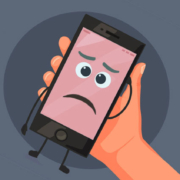Get Health Support via Your Smartphone
Paula has an appointment with her primary care doctor this morning, and she’ll be right here on the sofa when it happens. Telemedicine is now a part of everyday life, but your phone can be an asset to your health even beyond speaking to your doctor.
For example, hypertension is still a significant problem in the U.S., and it’s directly related to heart disease, stroke, and kidney disease. The typical treatments are medications, diet, and exercise. The problem is that too many people don’t follow through consistently enough to help themselves. Before I go any further, here’s a hypothetical: Imagine an application for your smartphone that would record your blood pressure and help you with diet and exercise recommendations and tracking; would that help you and others lower mild hypertension?
That’s what a group of physicians and public health officials in the Chicago area wondered. In the Smart Hypertension Control Study, they scanned more than 2,700 electronic medical records to find just over 300 people with mild hypertension to take part in a study comparing two different approaches to managing hypertension. Both the experimental group and the control groups used home blood pressure monitoring (HBPM) that could be reported automatically after it was taken with a Bluetooth connection to a smartphone. The experimental group used a smartphone app—a hypertension personal control program (HPCP).
The application used artificial intelligence to provide reminders and feedback along with diet and exercise information. The primary outcome was a difference in BP between the groups; I’ll tell you more about the results on Thursday. Until then, pick one single habit, such as taking your temperature or washing your hands, and through Saturday see how regularly you do that.
Hypertension is bad any time, but with a virus that seems to kill people with preexisting conditions, this is a great time to improve your habits.
What are you prepared to do today?
Dr. Chet
Reference: JAMA Open.doi:10.1001/jamanetworkopen.2020.0255.









